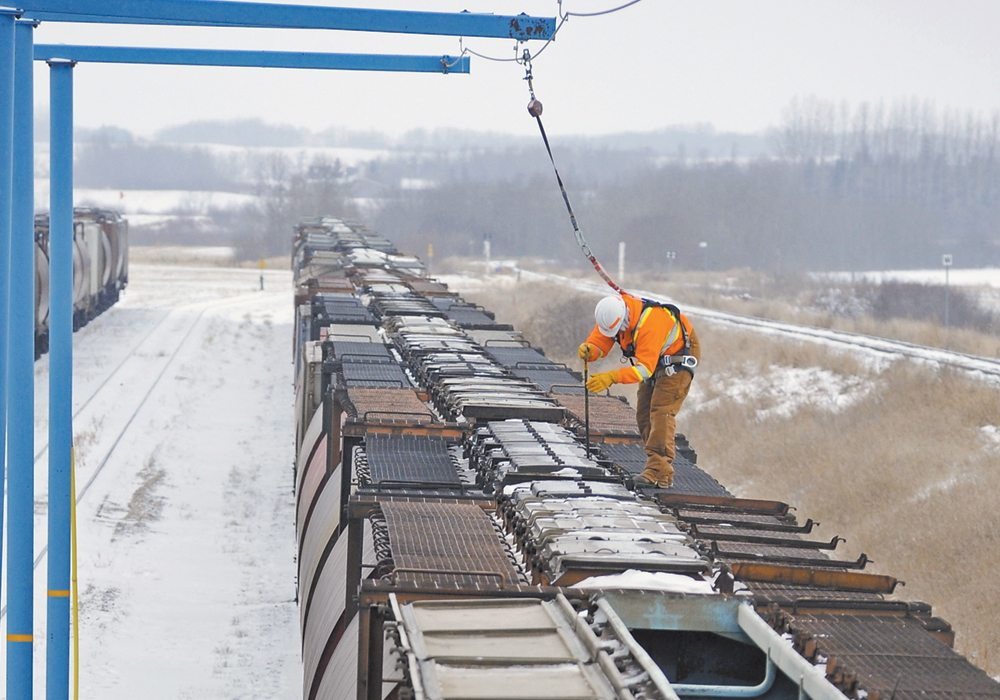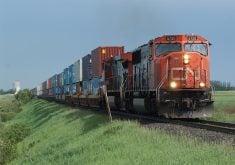BRANDON — Farmers might not realize it, but they’re in a Goldilocks situation with rail transportation.
According to University of Manitoba agricultural economist Derek Brewin, the 2018 “tweak” to the rate cap on grain has led to good service as well as increased investments by railways and elevator companies.
“The farmer is getting fairly well served,” said Brewin in an interview following his presentation entitled Grain Rail Transportation: Are We On The Right Track?
Related story: Despite risks on the horizon, there’s reason for optimism
Read Also

Russian wheat exports start to pick up the pace
Russia has had a slow start for its 2025-26 wheat export program, but the pace is starting to pick up and that is a bearish factor for prices.
“When we (saw) $1,000 (per tonne) canola prices and only a $60 basis, that’s a pretty good sign.”
The maximum revenue entitlement was created in 2000 in an attempt to prevent the railways from squeezing high rates from farmers while still encouraging them to haul grain. After a review, the system was updated in 2018 to provide better incentives for commercial interests to invest in the grain handling system, which Brewin thinks worked.
“That tweak … led to the railways investing in (better) cars (and) improved the efficiency in the entire system,” Brewin told farmers.
“After we invested in that capacity in cars, the terminals all became more efficient.”
The railways were able to make a good return hauling grain, the grain companies were able to make a good return handling grain and farmers got a good price. That appears to have been the result of the recent changes.
“The railways have that incentive to move as much grain through the system as possible. They will earn that MRE on every tonne they move,” said Brewin.
“Moving lots of grain through the supply chain makes the whole supply chain more efficient, and a more efficient supply chain means they can reflect the world price back to the farmer at the lowest cost they can hit.”
Recent years have seen major investments in rail-connected elevators and terminals, suggesting the grain companies believe their investments will be rewarded by a rail system that doesn’t steal all the profitability from them.
“As a regulatory tool … to me, I think it was a really good solution to solving that capacity (deficit) in the system.”
Managing to reach the Goldilocks zone — not too hot, not too cold, but just right — is always a Holy Grail-like quest for economic policymakers. When central banks adjust interest rates and attempt to manage economic growth and inflation, they are trying to create the Goldilocks situation of good economic growth with low inflation.
It is a very difficult goal to achieve, and central banks usually go too far one way or the other, either allowing an inflationary spike to occur or causing a recession to throw millions out of work.
Policymakers for grain transportation, including farm organizations, have been trying to use the MRE to achieve a similar result — good grain flow with low rates to farmers but continuing investment in the system.
While the present Goldilocks moment is something to be pleased with, Brewin said it isn’t necessarily permanent. There are always calls for changes one way or the other, some of which could break today’s positive equilibrium.
Too much pressure on the railways could lead to them backing off from investing more in grain transportation. At the same time, relieving them of the MRE’s constraints could see them return to the days of slow and inadequate transportation.
“If we removed the MRE as a tool to cap the overall rates, the incentive for the railways is to charge very high rates, and all the grain companies’ current investments would pay off less, and their incentive to expand or, say, be more efficient in Vancouver, decreases,” said Brewin.
“Keeping it the way it is kind of splits the profits to both of those players so they have an incentive to invest.”
















